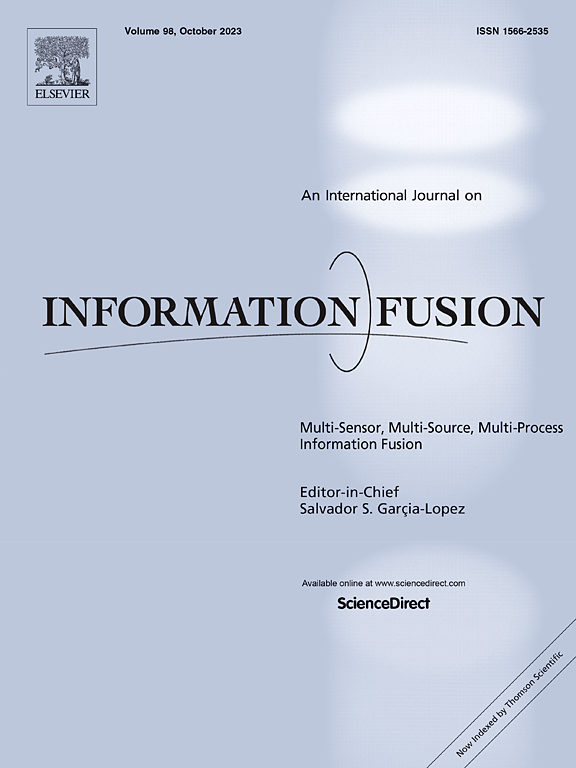基于知识的车道级交通流预测动态关联建模框架
IF 15.5
1区 计算机科学
Q1 COMPUTER SCIENCE, ARTIFICIAL INTELLIGENCE
引用次数: 0
摘要
车道级交通预测可以预测特定车道段近期的交通状况,实现实时交通管理,特别是帮助自动驾驶汽车(AVs)完成精确的任务,如车辆跟踪和变道。尽管这一领域取得了重大进展,但仍存在一些关键挑战。首先,车道段的交通状态与其他路段表现出动态的、非线性的空间相关性,这使得在现实环境中精确建模变得复杂。其次,现有的深度学习模型严重依赖于特定的数据集,导致泛化能力差。第三,虽然最近的研究表明,大语言模型(llm)在生成可靠的流量预测结果方面表现出优越的性能,但其直接应用受到效率低下、计算成本高和难以捕获动态流量特征的阻碍。为了应对这些挑战,我们提出了基于知识的动态相关建模(KIDCM)框架,该框架将预训练的llm与传统的预测方法集成在一起,以实现泛化和预测精度之间的平衡。具体而言,我们引入了一种通用空间动力学建模(GSDM)方法,该方法利用LLM生成的无偏交通数据来分析一般规律的动态空间相关性。通过将传统的时间序列模型与注意力机制相结合,GSDM有效地模拟了线性时间依赖性和非线性空间相互作用,确保了在不同条件下的鲁棒泛化。此外,我们开发了一个代理模型,提取了llm的流量预测功能。这个代理模型可以在小样本量下进行微调,在保留llm的泛化优势的同时减轻它们通常的高资源需求。广泛的评估表明,我们的框架在泛化、小样本训练和计算成本方面优于最先进的模型。本文章由计算机程序翻译,如有差异,请以英文原文为准。
A knowledge-informed dynamic correlation modeling framework for lane-level traffic flow prediction
Lane-level traffic prediction forecasts near-future conditions at specific lane segments, enabling real-time traffic management and particularly aiding autonomous vehicles (AVs) in precise tasks such as car-following and lane changes. Despite substantial advancements in this field, some key challenges remain. First, the traffic state of a lane segment exhibits dynamic, nonlinear spatial correlation with other segments, making accurate modeling complex in real-world environments. Second, existing deep learning models depend heavily on specific datasets, leading to poor generalization. Third, while recent studies have shown that Large Language Models (LLMs) exhibit superior performance in generating reliable traffic prediction results, their direct application is hindered by inefficiency, high computational costs, and difficulties in capturing dynamic traffic features. To address these challenges, we propose the Knowledge-informed Dynamic Correlation Modeling (KIDCM) framework, which integrates pre-trained LLMs with traditional predictive methodologies to achieve a balance between generalization and prediction accuracy. Specifically, we introduce a General Spatial Dynamics Modeling (GSDM) method, which leverages the unbiased traffic data generated by LLM to analyze the general law dynamic spatial correlations. By integrating traditional time-series models with attention mechanisms, GSDM effectively models both linear temporal dependencies and nonlinear spatial interactions, ensuring robust generalization across varying conditions. Additionally, we develop a surrogate model that distills the traffic prediction function of LLMs. This surrogate model can be fine-tuned with small sample sizes, preserving the generalization advantages of LLMs while mitigating their typically high resource demands. Extensive evaluations demonstrate that our framework outperforms state-of-the-art models in terms of generalization, small-sample training, and computational cost.
求助全文
通过发布文献求助,成功后即可免费获取论文全文。
去求助
来源期刊

Information Fusion
工程技术-计算机:理论方法
CiteScore
33.20
自引率
4.30%
发文量
161
审稿时长
7.9 months
期刊介绍:
Information Fusion serves as a central platform for showcasing advancements in multi-sensor, multi-source, multi-process information fusion, fostering collaboration among diverse disciplines driving its progress. It is the leading outlet for sharing research and development in this field, focusing on architectures, algorithms, and applications. Papers dealing with fundamental theoretical analyses as well as those demonstrating their application to real-world problems will be welcome.
 求助内容:
求助内容: 应助结果提醒方式:
应助结果提醒方式:


